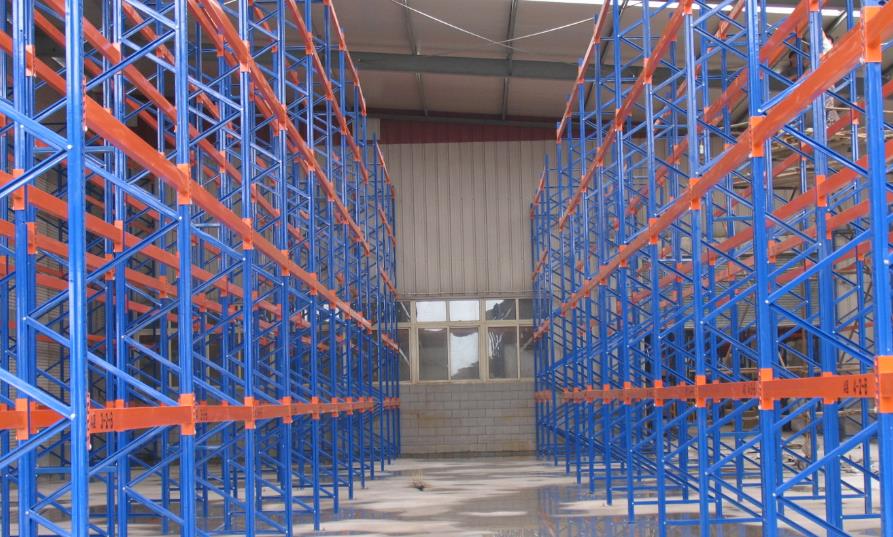Types of warehouse racking and their applications, approximate price ranges
There are several types of warehouse racking systems available, each designed to optimize storage space and facilitate efficient inventory management. Here are some commonly used warehouse racking types and their applications:
1. Selective Pallet Racking:
- Application: Selective pallet racking is the most common and versatile racking system used in warehouses. It allows direct access to each pallet, making it ideal for high-density storage with a wide variety of SKUs.
- Features: Pallets are stored on horizontal beams supported by vertical uprights. It offers easy accessibility and can be adjusted to accommodate different pallet sizes and weights.
2. Drive-In/Drive-Through Racking:
- Application: Drive-in and drive-through racking systems are suitable for high-density storage where the focus is on maximizing storage capacity rather than individual SKU selectivity. They are commonly used for storing large quantities of the same SKU.
- Features: Pallets are stored in deep lanes, and forklifts can drive into the system to deposit or retrieve pallets. Drive-in racking has one entry and exit point, while drive-through racking has entry points on both ends.
3. Push Back Racking:
- Application: Push back racking is ideal for high-density storage of multiple SKUs with limited aisle space. It offers good selectivity and high storage density.
- Features: Pallets are stored on nested carts that roll on inclined rails. When a new pallet is loaded, it pushes the existing pallets back. When unloading, the front pallet is removed, allowing the rear pallets to roll forward.
4. Pallet Flow Racking:
- Application: Pallet flow racking is suitable for high-density storage with a first-in, first-out (FIFO) inventory rotation system. It is commonly used for perishable goods or products with expiration dates.
- Features: Pallets are loaded at the higher end of slightly inclined roller or wheel tracks. Gravity moves the pallets to the picking end, ensuring automatic stock rotation.
5. Cantilever Racking:
- Application: Cantilever racking is designed for the storage of long and bulky items such as pipes, lumber, or furniture. It provides easy access and efficient storage for items of varying lengths.
- Features: Cantilever racks consist of horizontal arms extending from vertical columns. The lack of front columns allows for unobstructed access and flexibility in storing long and irregularly shaped items.
6. Mezzanine Racking:
- Application: Mezzanine racking systems utilize the vertical space above the floor to create additional storage or working areas within a warehouse. They are used to optimize storage capacity and increase operational efficiency.
- Features: Mezzanine systems often combine a structural mezzanine platform with other racking systems such as selective pallet racking or shelving to create additional levels of storage.
7. Mobile Racking:
- Application: Mobile racking, also known as mobile shelving, is used in warehouses with limited floor space. It maximizes storage density by eliminating unnecessary aisles.
- Features: Racking units are mounted on motorized carriages that move along tracks. The system allows for compact storage and aisle access only where needed.
It's important to consider factors such as inventory rotation, accessibility, storage density, and load characteristics when selecting the appropriate racking system for a warehouse. The specific requirements of the operation will determine the most suitable racking type to optimize space utilization and enhance overall efficiency.

The cost of warehouse racking systems can vary based on several factors, including the type of racking, size, configuration, material quality, and additional features. It's important to note that pricing information can fluctuate over time and may vary depending on the specific supplier or location. Here is a general overview of warehouse racking types and their approximate price ranges:
1. Selective Pallet Racking:
- Price Range: $50 to $150 per pallet position
2. Drive-In/Drive-Through Racking:
- Price Range: $200 to $400 per pallet position
3. Push Back Racking:
- Price Range: $300 to $500 per pallet position
4. Pallet Flow Racking:
- Price Range: $200 to $400 per pallet position
5. Cantilever Racking:
- Price Range: $200 to $500 per linear foot
6. Mezzanine Racking:
- Price Range: $50 to $150 per square foot of mezzanine floor area
7. Mobile Racking:
- Price Range: $300 to $600 per pallet position
It's important to consider that these price ranges are approximate and may vary based on factors such as the size of the project, customizations, installation requirements, and the supplier or manufacturer chosen. Additionally, costs for additional accessories, such as safety features, decking materials, or installation services, should be taken into account.
To get an accurate and up-to-date pricing for specific warehouse racking systems, it's recommended to consult with suppliers or manufacturers who can provide detailed quotes based on your specific requirements and project scope.
